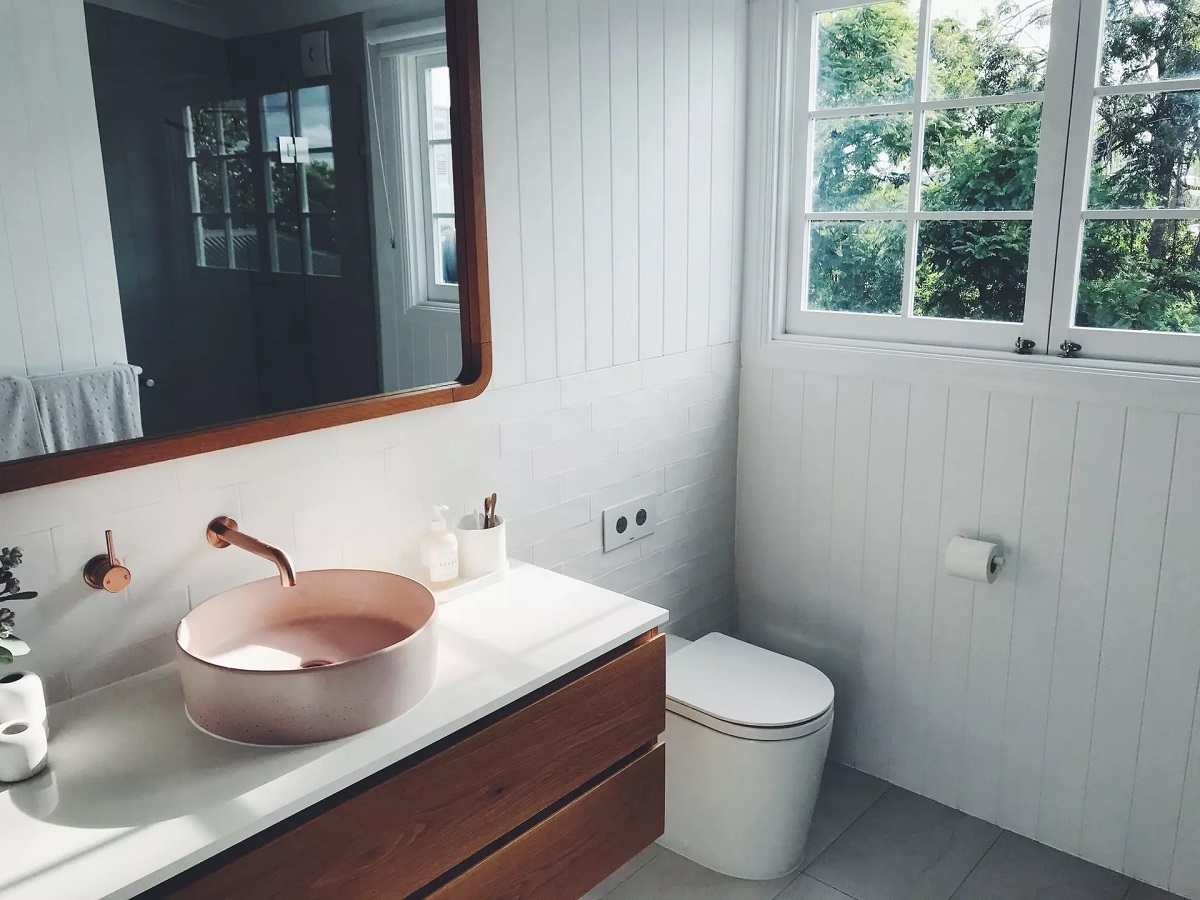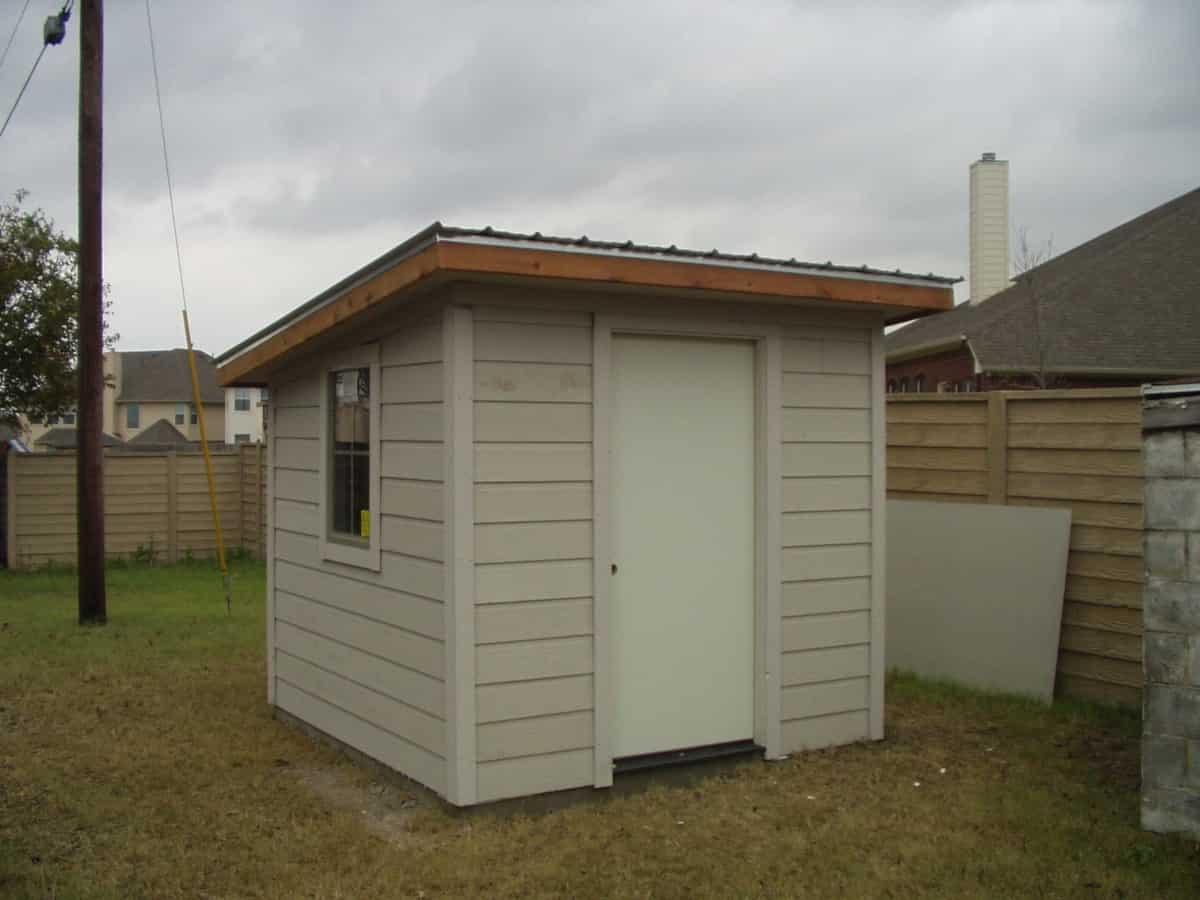Home>Furniture>Outdoor Furniture>How Close Can A Patio Be To The Property Line


Outdoor Furniture
How Close Can A Patio Be To The Property Line
Modified: March 7, 2024
"Discover the regulations and considerations when placing outdoor furniture on your patio near the property line. Ensure compliance and maximize your outdoor living space."
(Many of the links in this article redirect to a specific reviewed product. Your purchase of these products through affiliate links helps to generate commission for Storables.com, at no extra cost. Learn more)
Introduction
Welcome to our comprehensive guide on how close a patio can be to the property line. Whether you’re a proud homeowner looking to build a patio or a potential buyer interested in understanding property line setbacks, this article will provide you with the information you need.
When planning an outdoor space, it’s important to consider property line setbacks, which are the minimum distance required between your patio and the neighboring property line. These setbacks are established by local zoning ordinances, homeowner’s association guidelines, and building codes. Violating these regulations can lead to legal consequences and disputes with neighbors.
In this guide, we will delve into the regulations surrounding patio placement, explore how to determine the distance from the property line, discuss potential consequences of patio encroachment, and offer some options for building closer patios. By the end, you’ll have a solid understanding of the considerations and regulations involved, empowering you to make informed decisions regarding your patio project.
Key Takeaways:
- Respect property line setbacks to avoid legal trouble, neighbor disputes, and property value issues when building a patio. Compliance is key for a hassle-free and harmonious outdoor living experience.
- If your desired patio location is too close to the property line, explore options like variance requests, neighbor negotiations, or modified designs to meet setback regulations. Creative solutions can make your patio dreams a reality.
Read more: How Close Can Fence Be To Property Line
Understanding property line setbacks
When it comes to building a patio, one of the most important considerations is property line setbacks. Setbacks refer to the minimum distance that must be maintained between the patio and the neighboring property line. Understanding these setbacks is crucial for ensuring compliance with local regulations and avoiding potential legal issues.
What are property line setbacks?
Property line setbacks are guidelines established by local authorities that regulate how close a structure, such as a patio, can be built to the property boundary. These guidelines exist to protect the rights and interests of both property owners and the community as a whole. By maintaining a certain distance from the property line, setbacks help prevent encroachment on neighboring properties, ensure privacy, and prevent overcrowding.
Why are property line setbacks important?
Property line setbacks play a vital role in maintaining harmony and fairness among neighboring property owners. By enforcing setbacks, local authorities aim to prevent disputes and conflicts that may arise due to the proximity of structures. Setbacks also contribute to the overall aesthetic appeal and integrity of a neighborhood, ensuring that properties have sufficient breathing space and visual separation.
Different regulations for different locations
It’s important to note that property line setback regulations can vary depending on the specific location and zoning regulations. Each city, town, or county may have its own set of rules and restrictions in place. It is crucial to familiarize yourself with the regulations in your area to avoid any non-compliance issues.
Some areas may have specific setback requirements for certain types of structures, such as patios, decks, or fences. These requirements may also differ based on factors like the type of property (residential, commercial, etc.) or the proximity to certain areas of interest (waterfront, historical districts, etc.).
Before embarking on a patio construction project, it’s essential to research and consult with local authorities or professionals who can provide guidance on the specific setback regulations in your area. This will help ensure that your patio is built within the legal and acceptable limits, providing you with peace of mind and a hassle-free experience.
Read more: How Close Can A Shed Be To The Property Line
Patio placement regulations
When it comes to patio placement, there are several factors to consider, including local zoning ordinances, homeowner’s association guidelines, and building codes and permits. Familiarizing yourself with these regulations is essential to ensure compliance and a smooth construction process.
Local zoning ordinances
Local zoning ordinances are regulations set by the local government that dictate land use and development within a specific area. These ordinances often include guidelines on setbacks, maximum lot coverage, and other parameters that affect patio placement. Researching and understanding the zoning ordinances in your area is crucial before planning and building your patio.
These ordinances will typically define the minimum setback distances required between your patio and the property line. You may need to check with the local zoning department or visit their website to access the specific regulations pertaining to your property.
Homeowner’s association guidelines
If you live in a neighborhood or community governed by a homeowner’s association (HOA), they may have specific guidelines and restrictions regarding patio construction. HOAs are typically responsible for maintaining the aesthetic harmony and value of the properties within their jurisdiction.
Reviewing the HOA guidelines is crucial, as they may outline additional restrictions beyond what is mandated by local zoning ordinances. These guidelines may address the materials, design, size, and placement of patios, ensuring consistency and adherence to the community’s overall vision.
Before beginning any patio construction, consult your homeowner’s association to understand and obtain approval for your project. Failure to comply with their guidelines could result in fines or the need to remove the patio altogether.
Building codes and permits
Building codes and permits are a crucial part of the patio placement process. They help ensure that the construction meets safety standards and adheres to local regulations. The specific requirements will vary depending on your location.
Before constructing your patio, you may need to obtain a building permit from your local building department. This process typically involves submitting plans and obtaining approvals. Building inspectors will then conduct inspections at various stages of construction to ensure compliance with building codes.
Building codes cover a wide range of considerations, including structural integrity, electrical wiring, plumbing, and accessibility. Meeting these codes will ensure your patio is safe and up to standard.
It is important to consult with local authorities, such as the building department or code enforcement office, to determine the specific requirements and obtain the necessary permits before starting your patio construction.
Determining the distance from the property line
When planning the placement of your patio, accurately determining the distance from the property line is crucial to ensure compliance with setback regulations. Here are three steps to help you determine this distance:
Obtaining a survey of your property
An accurate survey of your property is the foundation for determining setbacks and understanding the layout of your land. Professional surveyors will measure and map your property, including property lines, existing structures, and easements.
Obtaining a survey will provide you with an official document that outlines the dimensions and boundaries of your property. This document will serve as a valuable reference when calculating setback distances for your patio.
Using setback requirements to calculate distance
Setback requirements can be obtained from local zoning ordinances, homeowner’s association guidelines, or building codes. These regulations will specify the minimum distance that must be maintained between your patio and the property line.
Once you know the required setbacks, you can use them as a reference point to calculate the distance from the property line. For example, if the setback requirement is 10 feet, you would measure 10 feet from the property line to ensure your patio is within the acceptable limits.
Keep in mind that setbacks are typically measured from the edge of the patio or any structures attached to it, such as walls or roofs. It’s important to account for this when determining the placement of your patio.
Considering any existing structures or easements
When determining the distance from the property line, it’s important to consider any existing structures on your property. These structures may include buildings, fences, or other outdoor features.
The setback requirements will likely specify how the setbacks should be measured in relation to these existing structures. For example, you may be required to measure from the outermost edge of the existing structure, rather than from the property line itself.
In addition, it’s important to take into consideration any easements that may exist on your property. Easements are legal rights granted to utility companies or other entities, allowing them access to a portion of your property. These easements may impact the placement of your patio and may have their own setback requirements.
By taking these factors into account and obtaining an accurate survey of your property, you will be able to determine the distance from the property line with confidence and ensure compliance with setback regulations.
Read more: How To Close A Patio Umbrella
Potential consequences of patio encroachment
When it comes to building a patio, understanding and adhering to setback regulations is crucial. Failing to comply with these regulations can have several potential consequences, including legal ramifications, neighbor disputes, and an impact on property value.
Legal ramifications of violating setback regulations
Building a patio that encroaches on the property line or violates setback regulations can lead to legal issues. Local authorities have the power to enforce these regulations and may issue violation notices, fines, or even require the removal of the patio if it does not meet the required setbacks.
It’s important to note that the penalties for non-compliance can vary depending on the severity of the violation, local regulations, and the response of the affected neighbors. In some cases, failing to rectify the violation may result in ongoing legal battles and additional costs.
Disputes with neighbors
Patio encroachment can lead to disputes and strained relationships with neighbors. When a patio extends beyond the acceptable limits, it can infringe upon the privacy and enjoyment of neighboring properties.
Neighbors may have concerns about noise, loss of privacy, obstructed views, or the overall visual impact of an improperly placed patio. Such disputes not only cause stress and tension but can also escalate into legal action if a resolution cannot be reached.
Open communication and a willingness to address neighbor concerns can be essential in avoiding or mitigating these disputes. Consulting with neighbors before starting the project and ensuring that your patio respects their boundaries can go a long way in maintaining positive relationships.
Impact on property value and potential buyers
One of the main reasons homeowners invest in outdoor spaces like patios is to enhance their property value. However, a patio that encroaches on the property line or violates setback regulations can have a negative impact on the value of your property.
Potential buyers may be deterred by a patio that does not meet the required setbacks or those that create conflicts with neighbors. It can limit the pool of interested buyers and potentially lead to a longer time on the market or decreased property value.
Even if you’re not planning to sell your property in the near future, maintaining a strong property value is crucial for your long-term investment. Ensuring that your patio is properly placed and compliant with setback regulations will help protect your property value and appeal to potential buyers down the line.
By understanding the potential consequences of patio encroachment and taking the necessary steps to comply with setback regulations, you can avoid legal issues, maintain positive relationships with neighbors, and protect your property value.
Read more: How To Close In An Outdoor Patio
Options for closer patios
If you find that your desired patio location is closer to the property line than the setback regulations allow, there are a few options to consider. While it’s always best to comply with setback requirements, in some cases, you may be able to explore alternative solutions to build a patio that meets your needs while still respecting the regulations.
Variance and exemption processes
Some municipalities offer a variance or exemption process that allows property owners to request a deviation from the standard setback requirements. This process typically involves submitting an application and demonstrating a valid reason why the variance should be granted. Reasons may include unique topography, preexisting structures, or other special circumstances.
If your situation warrants a variance, consult with the local zoning department to understand the process and requirements. Keep in mind that the decision to grant a variance or exemption is at the discretion of local authorities, and there are no guarantees. However, it can be worth exploring if you have a valid justification for deviating from the setback regulations.
Negotiating with neighbors and obtaining written agreements
In some cases, you may be able to reach an agreement with your neighbors to obtain their consent for a closer patio. This typically involves open communication, understanding their concerns, and finding mutually beneficial solutions.
Approaching your neighbors with a well-thought-out proposal that addresses any potential negative impacts and provides benefits to them can increase the likelihood of their support. This may include offering privacy screens, sound barriers, or design adjustments to minimize the impact on their property.
If you’re able to reach an agreement, it’s crucial to document the agreement in writing to avoid any future disputes. This written agreement should clearly outline the terms, such as the specific dimensions of the patio, any necessary maintenance responsibilities, and an acknowledgment that the neighbor has given their consent.
Designing smaller or raised patios to comply with setbacks
If all else fails and you’re unable to obtain a variance or agreement with neighbors, consider modifying the design of your patio to comply with the setback regulations. One option is to reduce the overall size of the patio to ensure it falls within the allowed setback limits.
Another option is to explore raised patio designs. By elevating the patio above ground level, you may be able to meet the setback requirements while still creating a functional outdoor space. Raised patios can provide additional visual appeal and can be customized with features such as built-in seating or planters.
Keep in mind that any modifications to the design or size of your patio should still comply with building codes and other applicable regulations. Consulting with a professional designer or contractor can help ensure that your modified patio design is safe, structurally sound, and aesthetically pleasing.
Remember, it’s always best to seek professional advice and obtain the necessary approvals when considering alternative options for closer patios. By exploring these possibilities, you can find a solution that works within the constraints of setback regulations while still creating an enjoyable outdoor space.
Read more: Who Owns A Fence On A Property Line
Conclusion
Building a patio is an exciting project that can enhance your outdoor living space and increase the value of your property. However, it’s essential to understand and comply with property line setbacks to avoid potential legal issues, disputes with neighbors, and negative impacts on property value.
Throughout this comprehensive guide, we have explored the importance of property line setbacks and the various regulations that govern patio placement. We have discussed the need to familiarize yourself with local zoning ordinances, homeowner’s association guidelines, and building codes to ensure compliance with setback requirements.
Determining the distance from the property line requires obtaining an accurate survey of your property, using setback requirements to calculate the distance, and considering any existing structures or easements that may impact patio placement.
Additionally, we have highlighted the potential consequences of patio encroachment, including legal ramifications, disputes with neighbors, and the impact on property value and potential buyers. It’s crucial to respect setback regulations and maintain positive relationships with neighbors to enjoy a harmonious living environment and protect your investment.
If faced with closer patio situations, we have presented options such as variance and exemption processes, negotiating with neighbors and obtaining written agreements, or designing smaller or raised patios to comply with setbacks. By exploring these alternatives, you may find a solution that allows you to build a patio that meets your desires while respecting setback regulations.
Remember to consult with local authorities, obtain necessary permits, and seek professional advice when needed. By doing so, you can ensure your patio project is in compliance with all regulations and guidelines, giving you peace of mind and a patio that you can enjoy for years to come.
In conclusion, thorough research, understanding of regulations, open communication, and creative problem-solving can help you navigate the process of patio placement and ensure a successful project that meets both your needs and the requirements of setback regulations.
Frequently Asked Questions about How Close Can A Patio Be To The Property Line
Was this page helpful?
At Storables.com, we guarantee accurate and reliable information. Our content, validated by Expert Board Contributors, is crafted following stringent Editorial Policies. We're committed to providing you with well-researched, expert-backed insights for all your informational needs.











0 thoughts on “How Close Can A Patio Be To The Property Line”